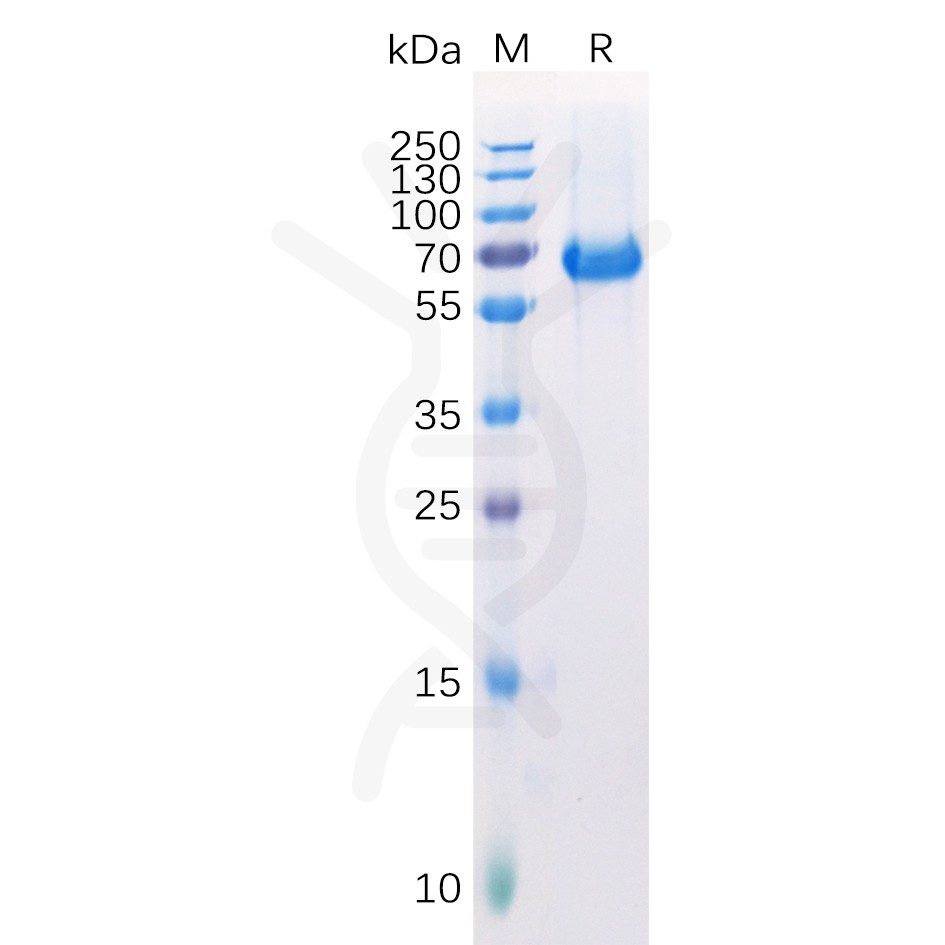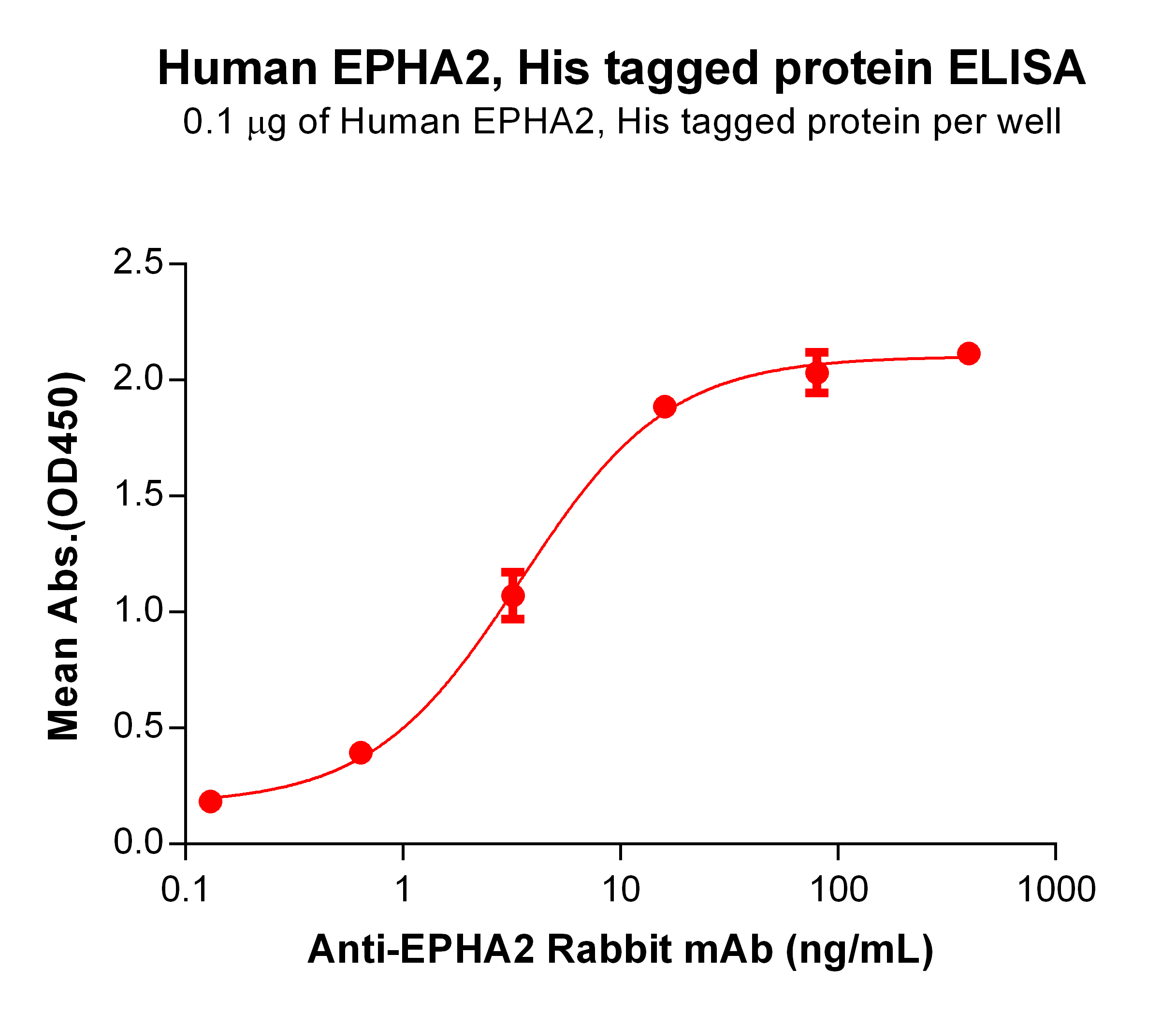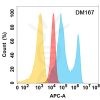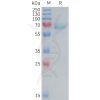| Target | |
|---|---|
| Synonyms | ARCC2;CTPA;CTPP1;CTRCT6;ECK |
| Description | Recombinant Human EPHA2 Protein with C-terminal 6×His tag |
| Delivery | In Stock |
| Uniprot ID | P29317 |
| Expression Host | HEK293 |
| Tag | C-6×His Tag |
| Molecular Characterization | EPHA2 (Ala24-Asn534) 6×His tag |
| Molecular Weight | The protein has a predicted molecular mass of 57.0 kDa after removal of the signal peptide. The apparent molecular mass of EPHA2-His is approximately 55-70 kDa due to glycosylation. |
| Purity | The purity of the protein is greater than 95% as determined by SDS-PAGE and Coomassie blue staining. |
| Formulation & Reconstitution | Lyophilized from sterile PBS, pH 7.4. Normally 5 % – 8% trehalose is added as protectants before lyophilization. Please see Certificate of Analysis for specific instructions of reconstitution. |
| Storage & Shipping | Store at -20°C to -80°C for 12 months in lyophilized form. After reconstitution, if not intended for use within a month, aliquot and store at -80°C (Avoid repeated freezing and thawing). Lyophilized proteins are shipped at ambient temperature. |
| Background | This gene belongs to the ephrin receptor subfamily of the protein-tyrosine kinase family. EPH and EPH-related receptors have been implicated in mediating developmental events, particularly in the nervous system. Receptors in the EPH subfamily typically have a single kinase domain and an extracellular region containing a Cys-rich domain and 2 fibronectin type III repeats. The ephrin receptors are divided into 2 groups based on the similarity of their extracellular domain sequences and their affinities for binding ephrin-A and ephrin-B ligands. This gene encodes a protein that binds ephrin-A ligands. Mutations in this gene are the cause of certain genetically-related cataract disorders.[provided by RefSeq, May 2010] |
| Usage | Research use only |
| Conjugate | Unconjugated |
服务热线
400-006-0995
18062749453







